Reviews

This page is for reviews of products we actually use. We don't make any money from any of these reviews or recommendations.
Starlink Standard with Roaming Package
We tried other methods of connecting to the internet while on the road but none of them worked well on our latest trip. Of course, one of our stops was in Death Valley, CA, and then some campgrounds with bad internet or our T-Mobile phones didn't have connection to the network either.
At about the 4th park with bad connectivity and on our way to Davis Mountains State Park and Big Bend National Park where we expected poor connectivity, we saw that Walmart sold Starlink Standard kits. They didn't seem to have the newer small format "mini" version but we are happy with the Standard. It was about $350 for everything we needed to get up and running. The kit comes with the rectangular antenna, antenna wire, router and power supply.
They have several plans to choose from including residential, roaming, business, etc. The roaming plan seems ideal for RVing and runs $165 a month. There's no contract and you can put your account on pause at any time. We also have a T-Mobile home access point that works well at our home campground but for the road it doesn't work so when home we can pause our Starlink account.
The first time setup took about 20 to 25 minutes. You have to download the Starlink App so you have to have an existing internet connection. That app walks you through the setup which is pretty simple. Once you get it plugged in and booted up, the system will try to find the satellites and determine the optimal alignment angle. You also have to select an access plan and the app will try to walk you through that as well but I had issues with that part and had to change over to another connection and set up my account with Starlink and choose our package. After that I went back to the app, reconnected to the Starlink router and it pulled down some system updates, had me reorient the antenna for optimal connection and we were up and running! Subsequent setups have taken about 5 minutes for the system to find the satellites and let me know how best to orient the antenna.
The speed seems great and as long as we can find a clear path to the sky, we should have plenty of internet access.
Starlink Standard Kit - Walmart
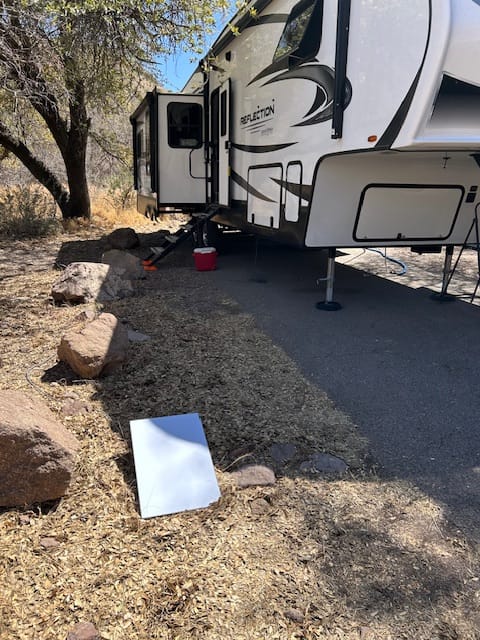
Hailo Folding 8-Step Ladder
No matter where you go in an RV you will likely need a good portable ladder that you can trust to get you up on the roof or at least high enough for repairs or cleaning off your slides before bringing them in. We have seen small ladders that extend and collapse down but didn't really trust them and they have to lean against our rig.
In a Colorado state park, we met a man who was using a Hailo ladder to clean his class A RV. He highly recommended the ladder and we did some more research and bought one. They hold up to 330 lbs but are very light and can easily attach to your existing RV ladder. We bought a standard chair holder and mounted that to our RV ladder and the Hailo hangs perfectly on it. I use a couple of bungee cords to hold it on and secure it with a cable and lock to prevent theft. They make several different sizes but the 8-step version is just tall enough for our purposes and when we hang it on the RV ladder it's nearly the exact same size so it doesn't drag or go up much higher than the roof.
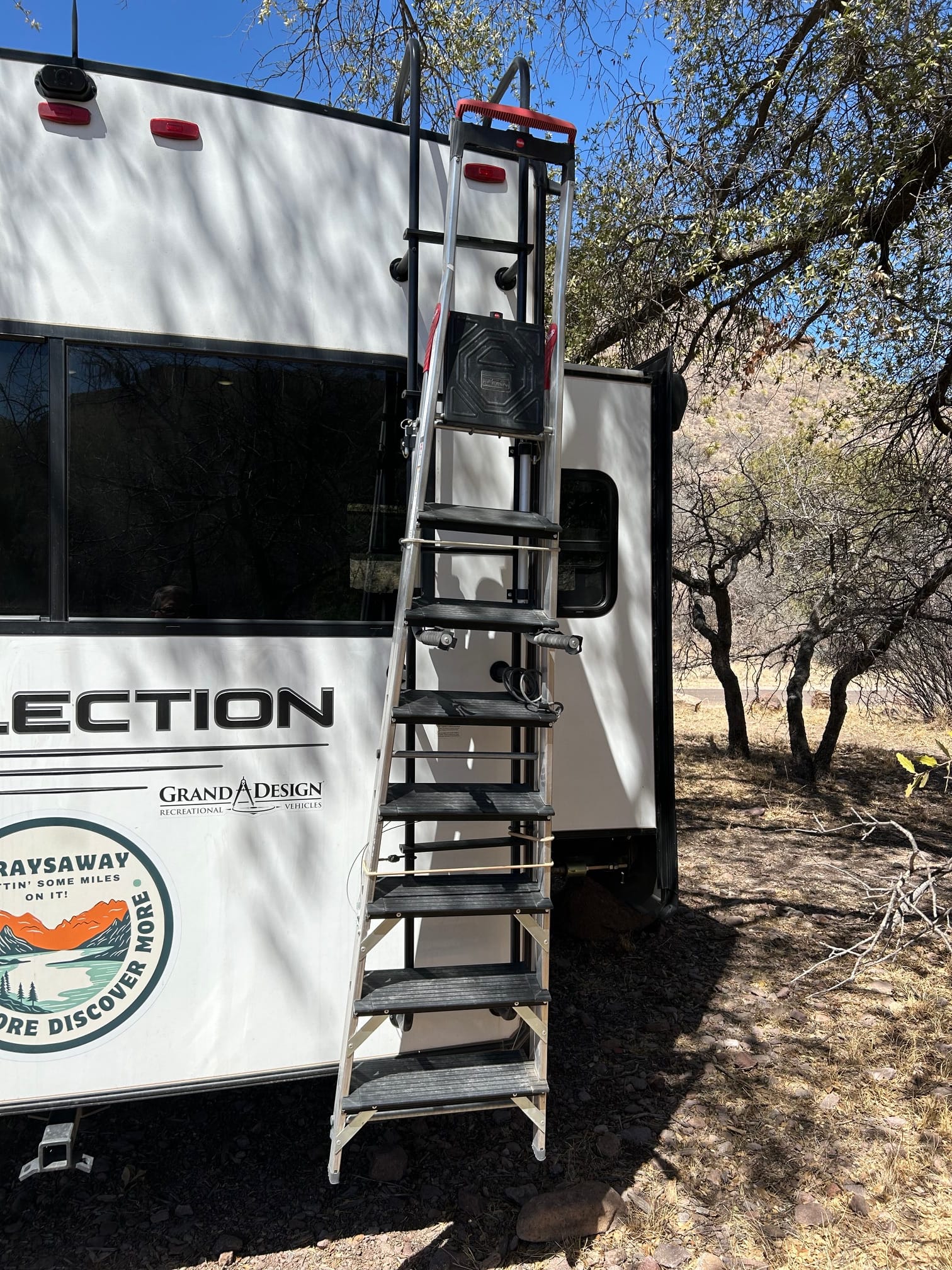
Govee Water Detectors
We have heard so many horror stories about water damage from leaking pipes that we invested in water sensors to catch those leaks early before they cause major damage. We chose Govee Water Sensors that come with a WiFi Gateway to send notifications to you in addition to the audible alarm.
Within a few short days of placing them in likely areas - under sinks and behind the water panel, we had an alarm from behind the water panel. It turns out that there was a very slow drip from the water inlet that worked it's way around to the back of the water panel and the sensor caught it! We are big believers now!
Update 1 Jan 2024: Well we had a cold snap the last two days and suddenly the water detector behind the water panel went off late this evening. Turns out that the cold caused a tiny drip at the spot where the hose connects to the RV. That water, like last time, worked its way around to the back and set off the alarm. The crazy part is we've been hooked up for almost a week with no issues and no leak (I've been checking) but all of a sudden we had one late on a cold night! RVing is always full of surprises. Once again these little sensors have potentially saved us a lot of damage!
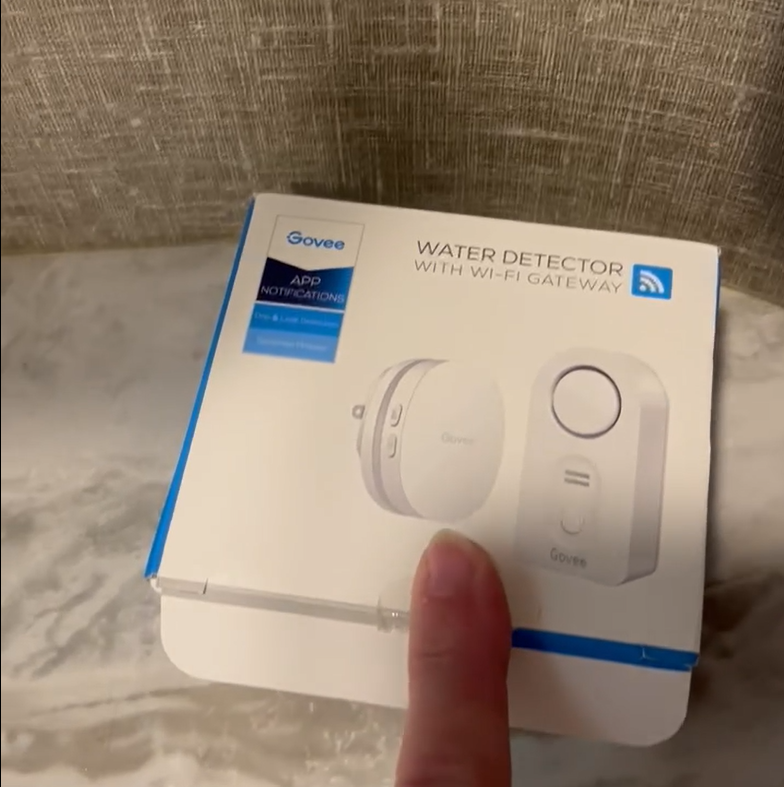
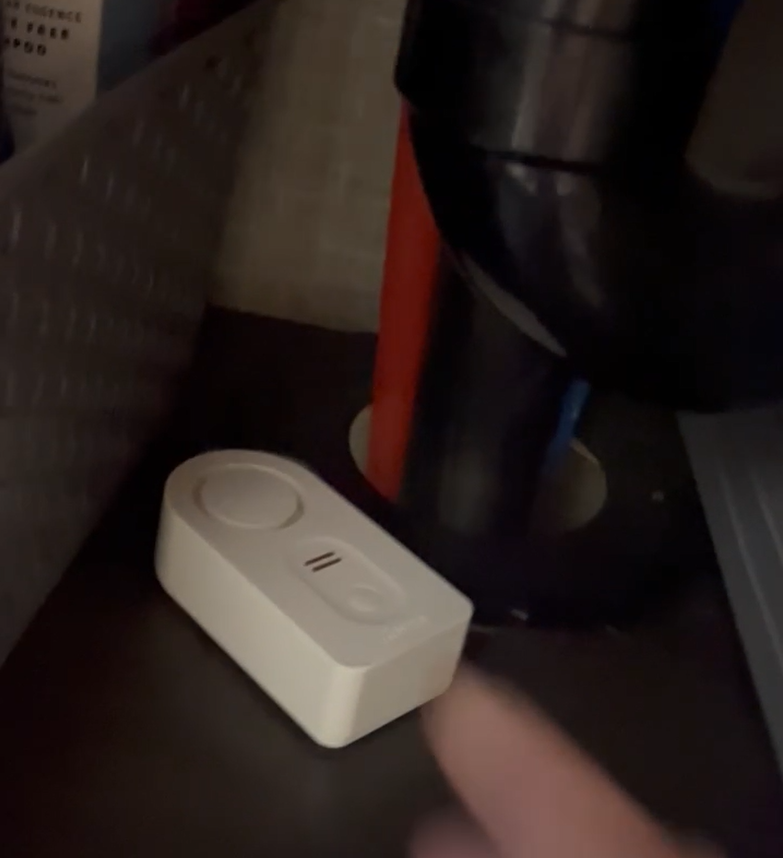
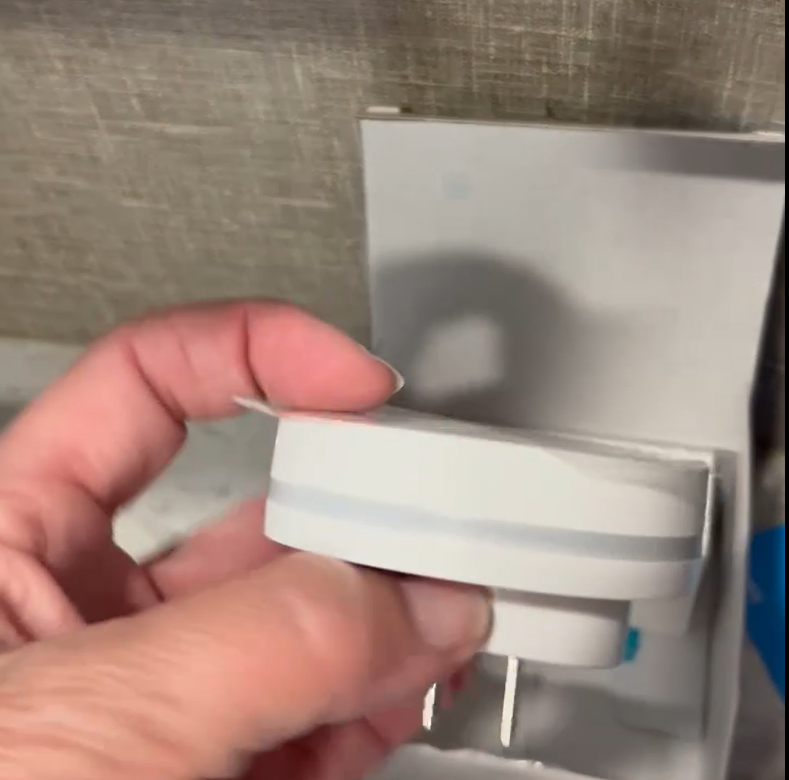
Govee Water Sensors
Link here to Amazon: https://www.amazon.com/dp/B07QP153GT/ref=cm_sw_r_as_gl_api_gl_i_ZRPM7FZVHWA2PG922S4R?linkCode=ml2&tag=braysaway-20
Jackery Explorer 500 Portable Power Station
After using the Jackery 300 Power Station we decided we needed slightly more overnight power and bought the Jackery Explorer 500. I've included pictures of it alongside the Jackery 300 for reference. We bought it packaged with a 100W solar panel for charging so we don't have to run our generator to recharge it. There are a couple of different size solar panels that you can purchase which will impact charging time. It is advertised with 518Wh of power available. It has one 110V outlet, 3 USB and a car 12V style plug and a light on the side. It's a little heavier than the 300 but not exceptionally so. We have to worry about total weight due to our rig size.
We have used the 500 to power our CPAPs overnight several times and it has worked flawlessly. A main difference that is apparent right away is that the 500 doesn't have a 120V input plug like the 300. It has a 120V transformer that plugs into the input port on the front just like the solar panels do.
As for charging, when we used the 120V charger, it charged in just over 7 hours and is advertised to charge in 7.5 hours. Using the solar panels, we got about 12 hour charge time with advertised 9.5 hours to charge. However, our tests were conducted during December and the winter sun is not as direct and passes through much more atmosphere so that may be the reason we didn't see the advertised efficiency.
Overall, we are exceptionally happy with our purchase and will update this article if anything changes!
Update: I discovered that the Jackery only provides 10A to the 12V plug and both my 12V tire pumps require 15A so I can't use the Jackery when pumping up my tires. I also found out that the extension cords you can buy for 12V plugs cut the amps down along it's length too much for my tire pumps. I was trying to run the tire pumps off the RV battery or truck battery and needed more length to reach. I had thought the tire pumps had gone bad but there's just too much resistance in those extension cords.
Here's the Amazon link (earns commission): https://www.amazon.com/dp/B08P42QKWK/ref=cm_sw_r_as_gl_api_gl_i_SMF9QTWQFVV1N3CH474J?linkCode=ml1&tag=braysaway-20&th=1
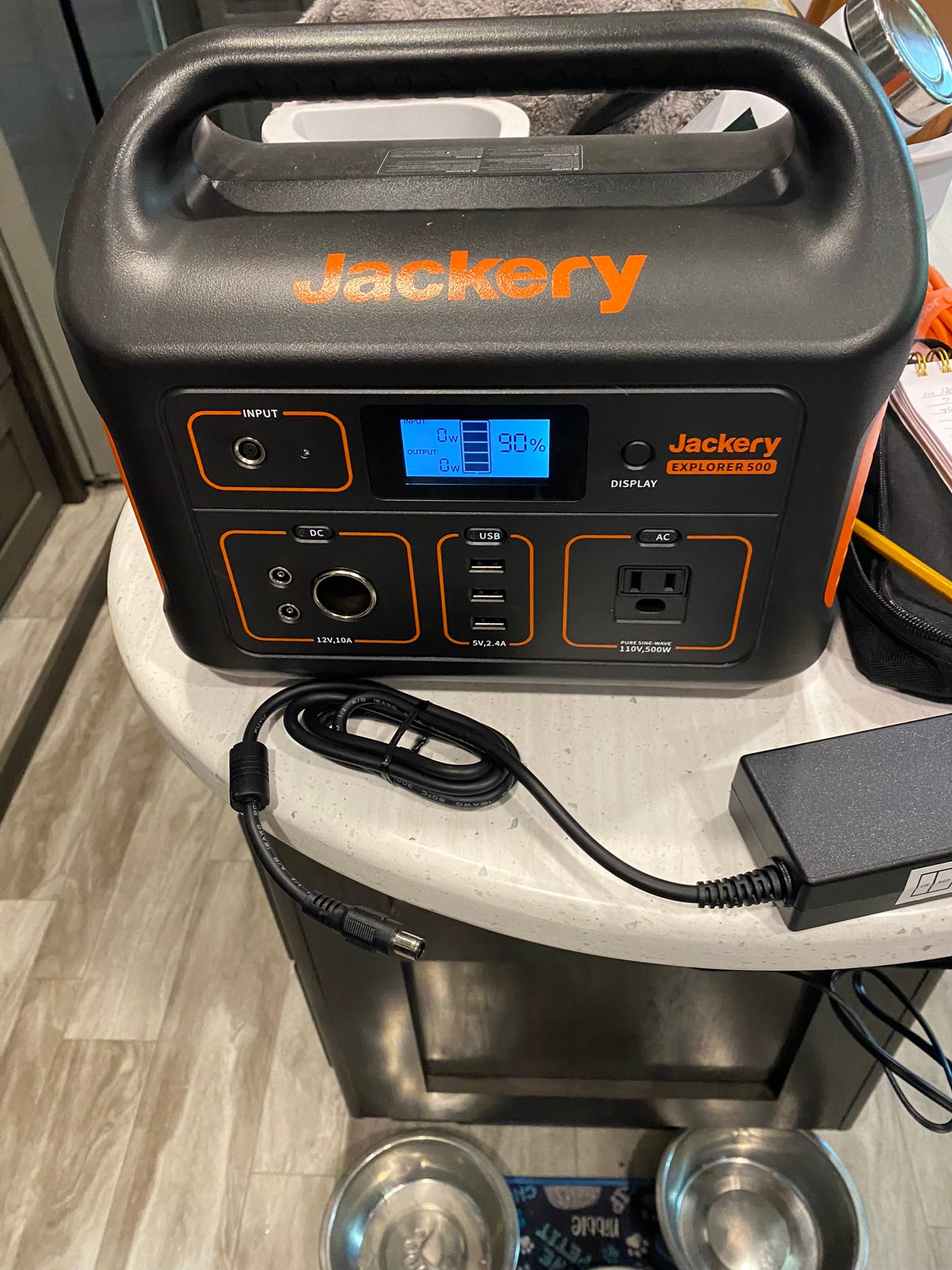
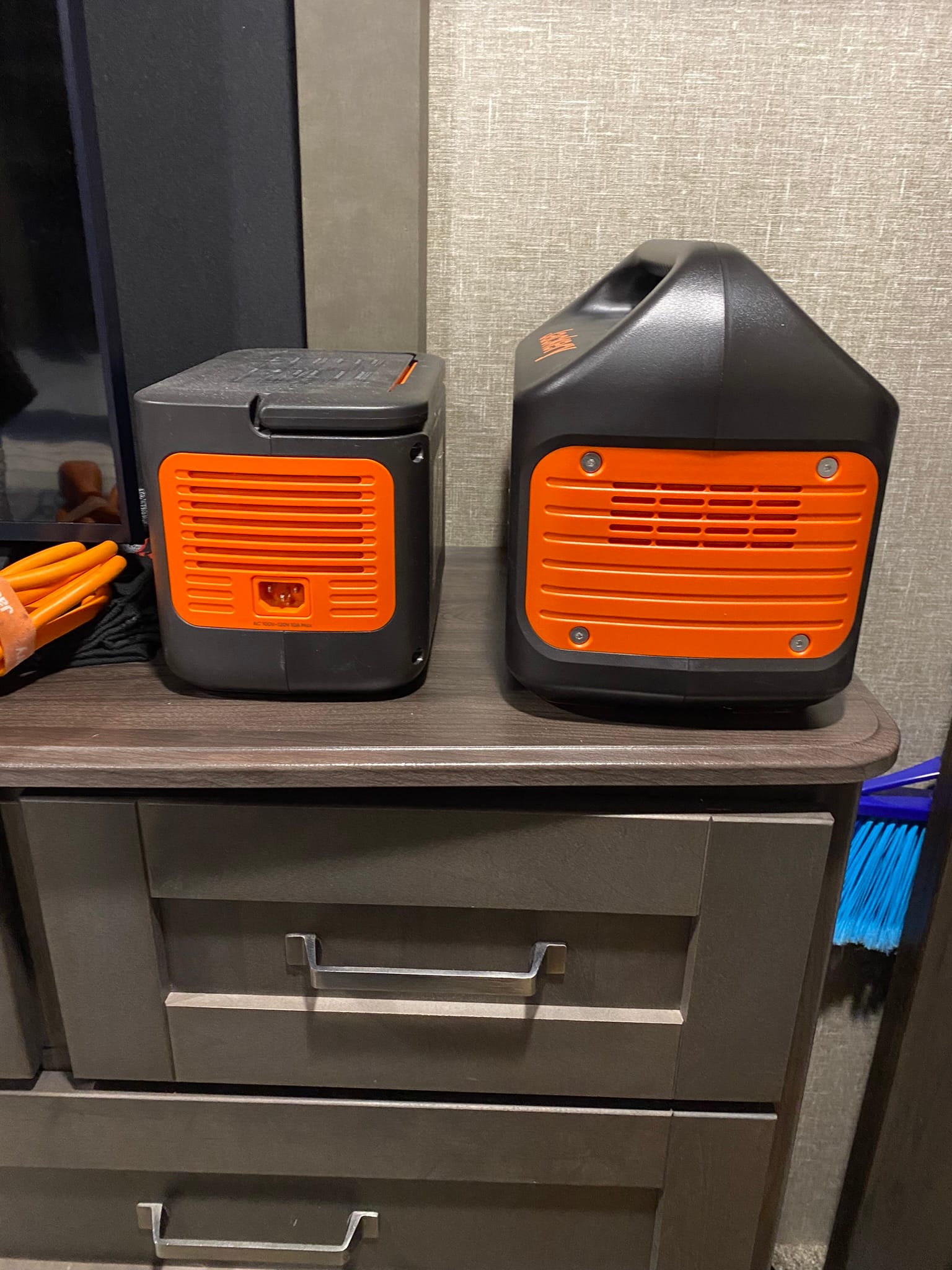
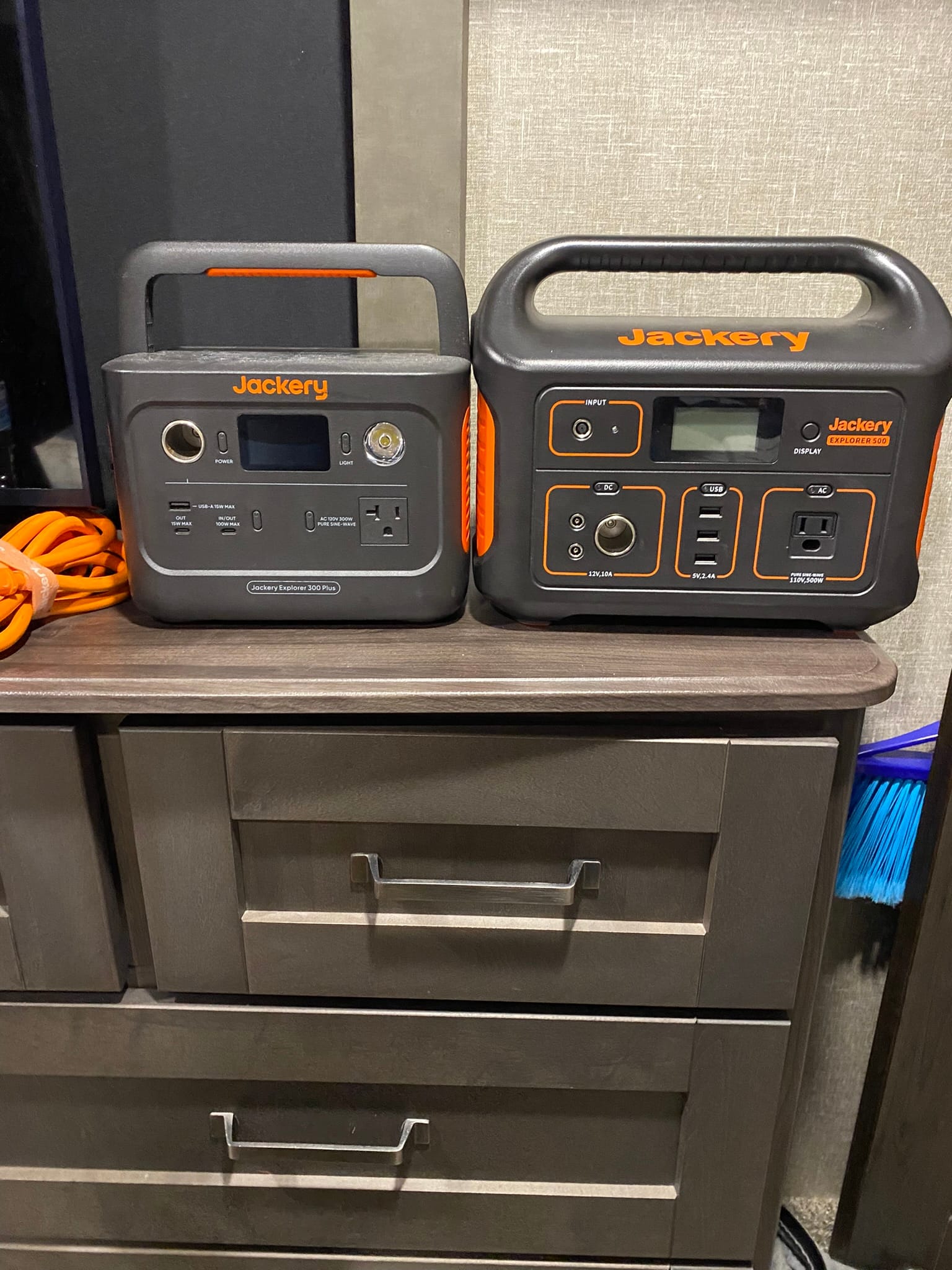
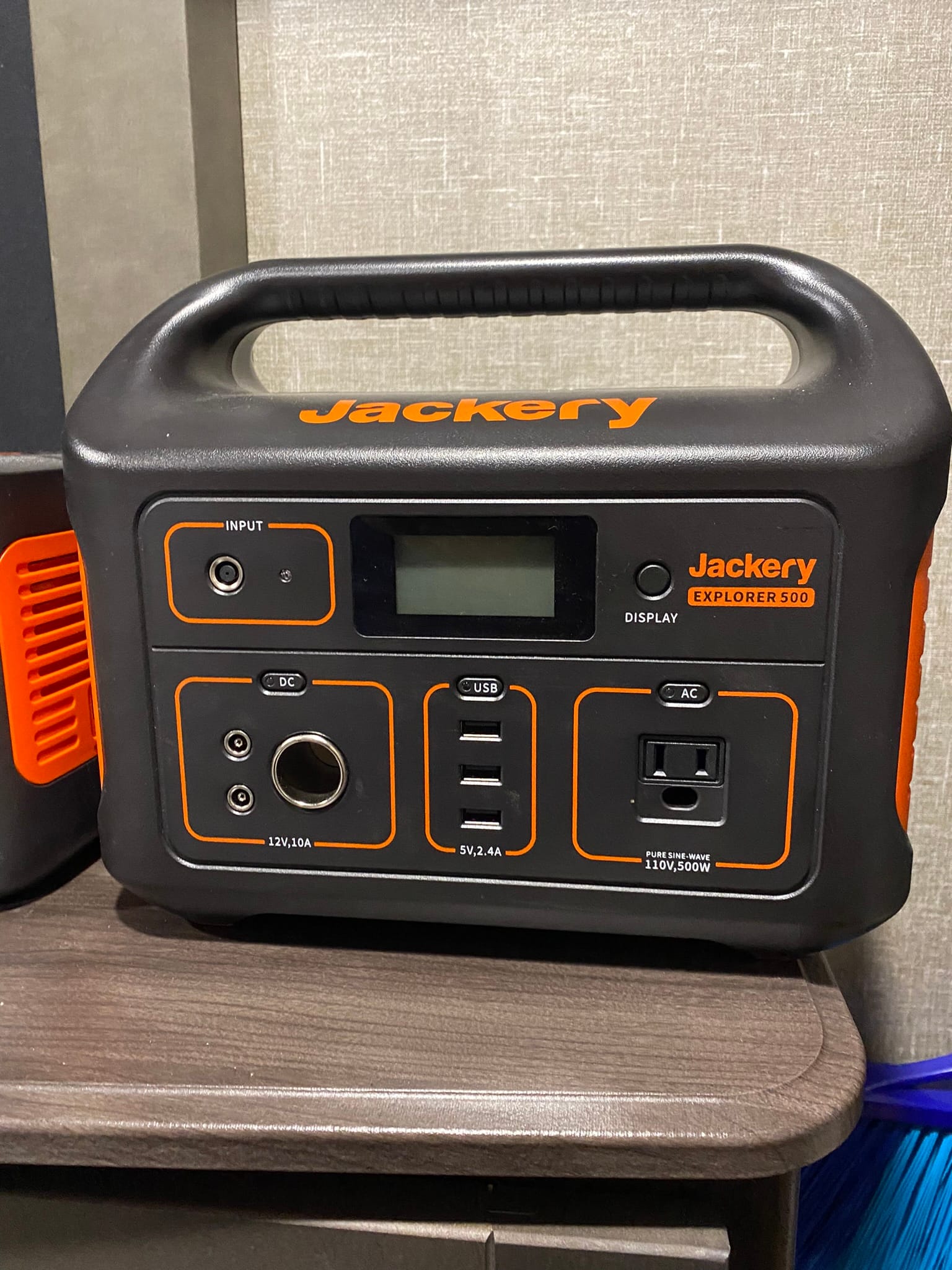

Jackery 500 Portable Power Supply
Jackery Explorer 300 Plus Portable Power Station
We were planning to do some boondocking on a recent trip and wouldn't have overnight power for our CPAPs without running a generator all night. Our friends, the Gills of GillsOnWheels, loaned us their Jackery Explorer 300 Plus for the trip. Before we left I ran a test with just my CPAP without the humidifier running and it ran all night just fine with over 50% power remaining. The next time we used it, we tried both CPAPs without the humidifiers running and it almost went all night.
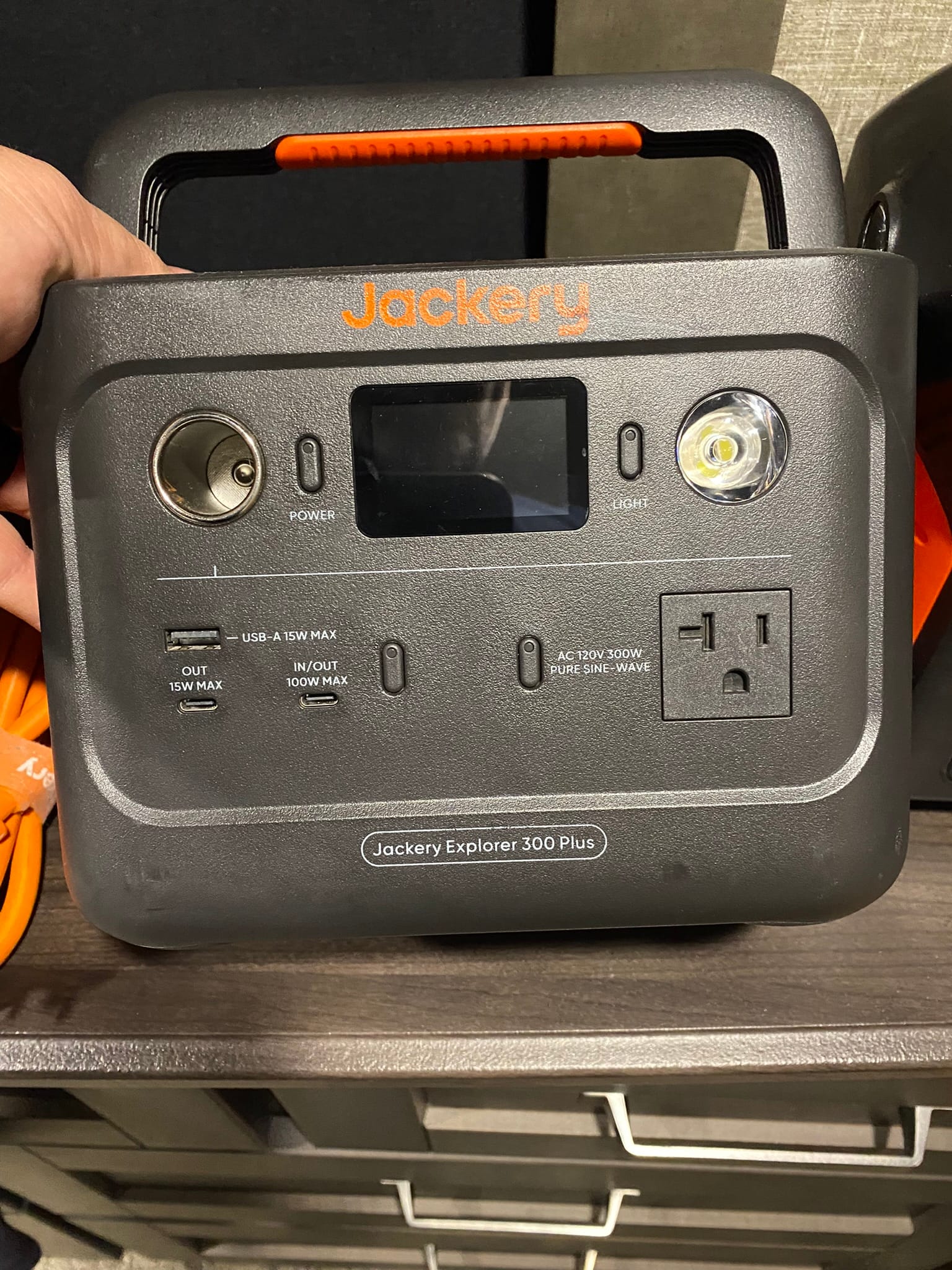
The Jackery 300 Plus is advertised to have 288Wh of power available. It has power ports for 120V a/c, USB-A, USB-C, and the old cigarette lighter style 12V plug (yes, I'm old enough to remember cigarette lighters!) It also has a built in light and a nice screen that provides charging and battery level information. It comes with a charging cable using 120V. Since we borrowed it, I can't say what all's in the box. Often you see it called a "solar generator" and is available with a solar panel for charging. One of the USB-C type plugs is also marked "input" so I assume that's where a solar panel would plug in to charge.
Overall, for the price and weight it is a nice operating little power supply especially if your needs overnight are small! It won't work for us long term because we need more 120V power overnight. We wound up buying it's slightly larger big brother the Jackery 500.